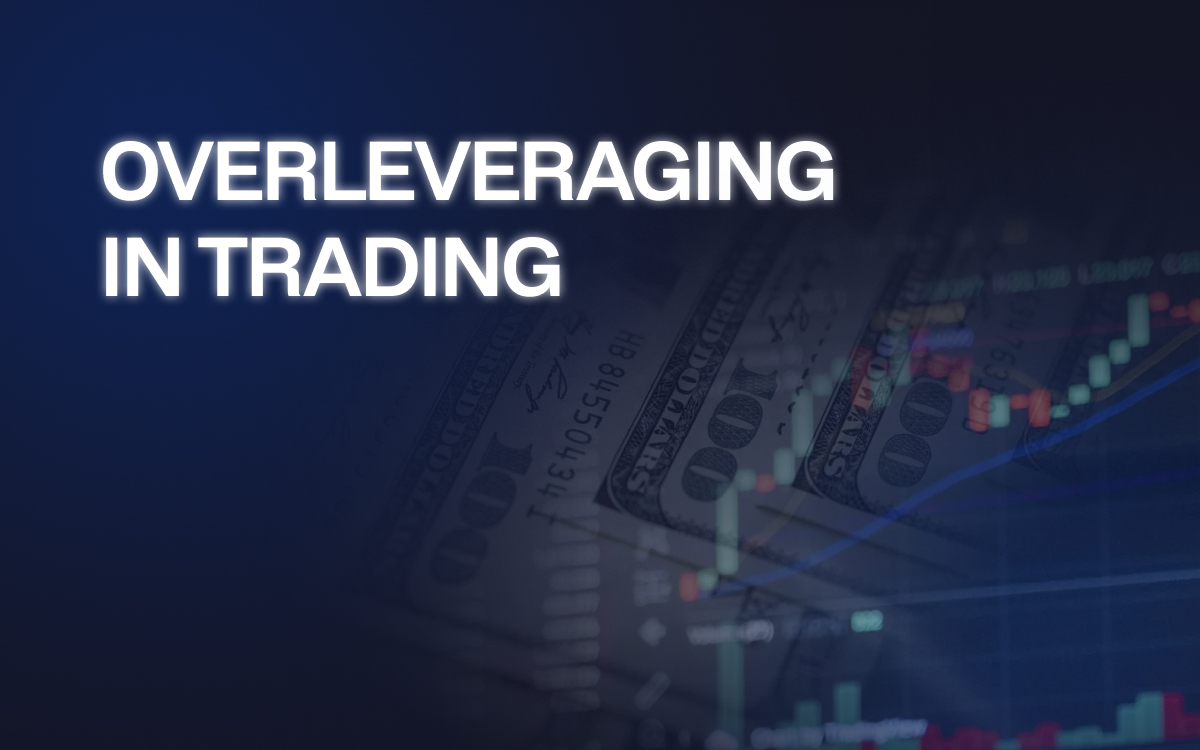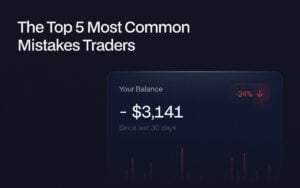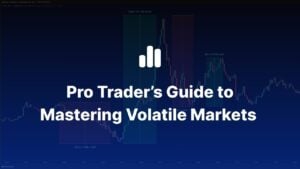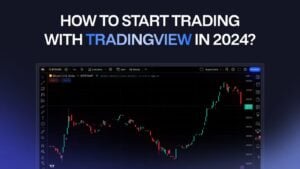Looking back at high school physics, you might remember the concept of levers. It’s a rather simple mechanical marvel that makes it easier to lift a load. But what does that have to do with trading? Let’s find out.
In trading, leveraging occurs when one borrows funds (leverage) to increase the potential return on investment. Leverage is usually denoted as a ratio (like 5:1, 20:1, 50:1, and so on).
I believe you already know where I am going with this, but yes, overleveraging means exactly what it sounds like: taking leverage beyond the limits.
What exactly is overleveraging?
As a trader, you are overleveraging when you borrow excessive funds and build up a big debt you’re incapable of repaying.
Now, you might ask, what are these limits? What do they have to do with profits and losses? Let me explain with an example scenario.
Suppose you have $10,000 capital with a 2% margin requirement. In that case, your leverage ratio is 50 to 1 (50:1).
Note: Leverage Ratio is calculated by taking the reciprocal of the margin. (1/0.02 = 50)
A leverage ratio 50:1 brings your total position size to $500,000 ($10,000 * 50).
Say you made an initial trade and bought EUR at 1.09 USD. The total EUR bought would be $500,000 / 1.09 = €458,715.60.
Case 1:
- Exchange Rate Increases: From 1.09 to 1.10
- New Position Value: €458,715.60 * 1.10 = $504,587.16
- Profit: $504,587.16 – $500,000 = $4,587.16
- Return on Investment: $4,587.16 / $10,000 = 45.87%
Case 2:
- Exchange Rate Decreases: From 1.09 to 1.08
- New Position Value: €458,715.60 * 1.08 = $495,412.85
- Loss: $500,000 – $495,412.85 = $4,587.15
- Return on Investment: -$4,587.15 / $10,000 = -45.87%
What’s a margin call?
A 2% MMR (Minimum Margin Requirement) means the equity in the trader’s account must be above this level ($500,000 * 0.02 = $10,000 in the earlier example). Otherwise, the broker may issue a margin call.
In case 2, when you acquire a loss of $4,587.15, you have $5,412.85 in your account.
A margin call is triggered since the remaining equity ($5,412.85) is below the required maintenance margin ($10,000). The trader (you) must deposit additional funds to return the equity to the required level, or the broker will liquidate positions to cover the shortfall.
How do I know I am overleveraging?
You are given carte blanche to trade as you wish with your account, but trading recklessly with excessive leverage will certainly lead you into debt.
Here are some common signs of overleveraging:
- Frequent Margin Calls:
If you frequently receive margin calls from your broker, this indicates that your positions are too large relative to your account size.
- Significant Account Drawdowns:
Large drawdowns (for instance, losing more than 20% of your account balance) suggest that your positions are too large and you are taking on high risk.
- Emotional Stress:
If you constantly worry about your trades and are unable to sleep due to market movements, it could be a sign that you are overleveraged.
- Inability to Diversify:
Overleveraging often leaves little room for diversification. You are at greater risk if all your Capital is tied up in a few highly leveraged positions.
Note: Leverage in Forex vs Stock Trading
The common leverage in Forex trading tends to be much higher than that in stock trading, this is partly because no tangible asset is being purchased or sold here.
In forex trading, each transaction involves two currencies, and the value of one currency is always relative to another.
When you open a position in the forex market, there’s no initial net value because you’re simultaneously buying one currency and selling another.
The Risks Involved in Overleveraging
Higher leverage means higher profits, but traders must also consider the opposite. Yes, you can lose as much as you can gain; my little example above touches on that possibility.
Common Risks
Increased Losses
- A small move downward on the chart, and boom, you’re looking at a massive loss thanks to the huge leverage.
- For example, with 100:1 leverage, a 1% decline in the asset’s value can result in a 100% loss of your Capital.
Margin Calls
- If the market moves against a leveraged position, your account may fall below the required maintenance margin level.
- When this happens, brokers issue a margin call, which means you need to deposit more funds to maintain the position, which is quite the hit to your wallet.
Psychological Stress & Emotional Trading
- Having a lot on the line comes with immense psychological stress that leads to emotional decision-making.
- Anxiety, fear, or overconfidence can negatively affect your trading decisions and result in impulsive actions.
Short-Term Focus
- Good ol’ greed. High leverage encourages traders to focus on short-term gains rather than long-term investment strategies.
- Short-term focus can result in frequent trading. Losses add up and erode profits over time.
What Else Can Go Wrong?
Slippage
- Say you’re trading a low-float stock – low liquidity, high volatility, and your order gets executed at a different price than requested. This happens due to rapid price changes and is called “Slippage.”
- With high leverage, slippage can significantly impact your position, potentially leading to larger-than-expected losses.
Limited Room for Error
- High leverage reduces the margin for error, meaning traders have less room to maneuver or recover from losing positions.
- Even experienced traders can find it challenging to navigate the market successfully with high leverage due to the reduced tolerance.
Leverage & Risk Management
Don’t let all of this scare you off. After all, every strategy in trading comes with a risk of its own.
You can take a few steps to be on the good side of leverage in trading and to avoid becoming a victim of overleveraging. These steps constitute risk management; an integral part of all trades.
Here are some excellent risk management techniques that traders (including myself) have used over the years:
Stop-Loss Orders
It is a rule of thumb to always use stop-loss orders to automatically close positions at a predetermined price level if the market moves against you.
It does what the name suggests: it stops you from acquiring a bigger loss. Learning where to place your stop-loss takes you back to technical analysis—there’s always more to learn!
Diversification
Concentrating all your Capital on a single trade is like stepping into a tunnel. It leaves you with two outcomes—everything goes your way, and you “win” the trade, OR things go south, and you’re drained of Capital.
To avoid such hefty risks, diversify across different currency pairs or asset classes and spread the risk. Select trades that are not highly correlated, reducing the likelihood of multiple positions moving against you simultaneously.
Risk-Reward Ratio
The oldest rule in the book is maintaining a favorable risk-reward ratio, typically aiming for a ratio of at least 1:3 or higher. This means the potential reward should be at least thrice the potential risk.
Trading is one of those things that benefits from a picky attitude. Make sure your trades meet your risk-reward criteria; that increases your probability of landing a profit.
Regular Monitoring
Monitor your open positions and adjust your strategy based on changing market conditions.
Review your trading performance regularly to identify patterns, strengths, and weaknesses. Use this information to refine your risk management approach.
Psychological Discipline
Get yourself a plan and stick to it. Leave no room for impulsive decisions based on emotion. Resist the urge to overtrade; being reckless is the last thing you want to do in trading.
Your decisions should always be backed by some kind of analysis, whether technical, fundamental, or both! Again, commit to risk management and set an appropriate stop loss.
Risk Mitigation Using Hedging
In an analogy, hedging is what one would call “insurance” to some extent. This technique helps you regain some of your losses on an asset.
For example, you can use F&O; as the stock price goes down, the value of your put option rises. This doesn’t make up for all of the damage, but half a loaf is better than none.
Education and Research
Stay current with market news, economic indicators, and geopolitical events that can impact currency prices. Invest in continuous education to improve your trading skills and understanding of risk management techniques.






